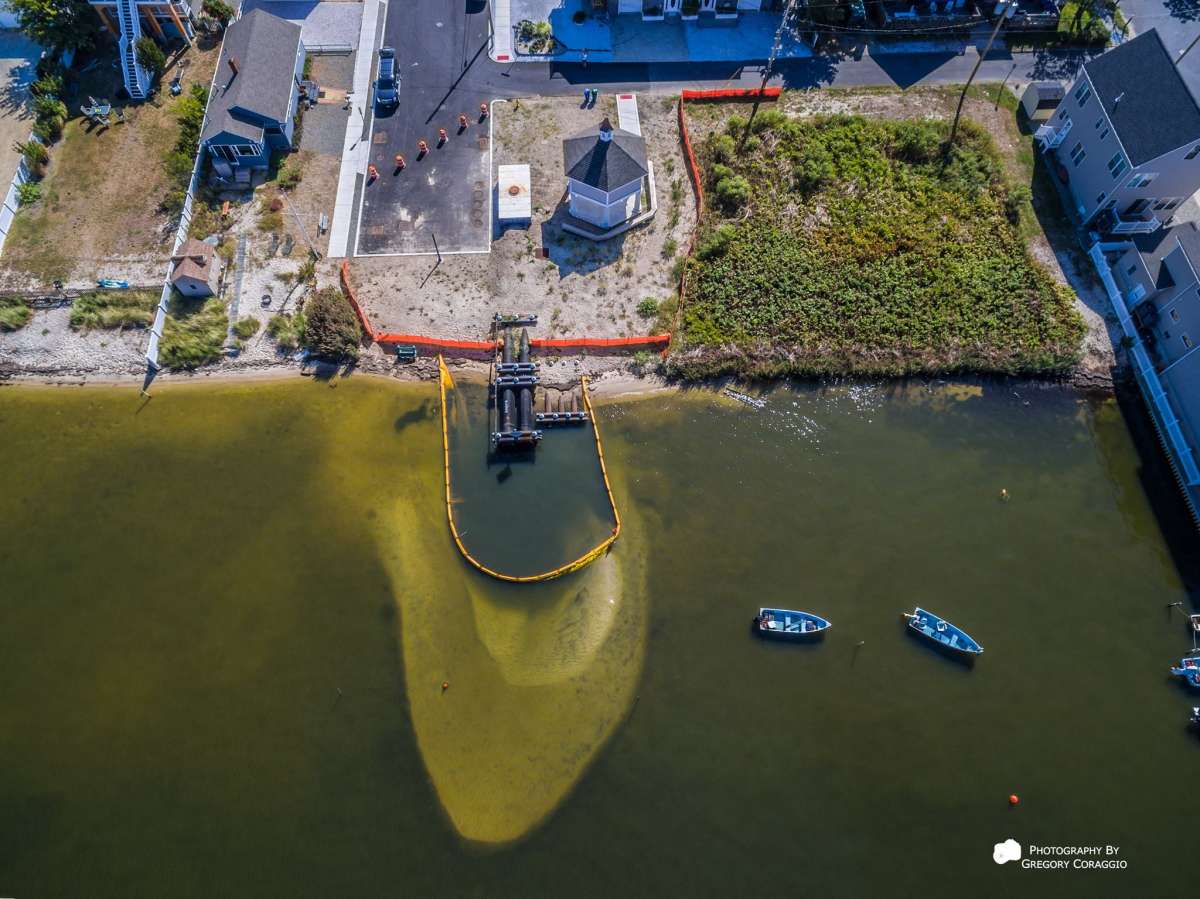State installing ‘marine mattresses’ in Barnegat Bay to reduce water discoloration
-

-

-

-

-

-

-

-

-

-

-

-

-

-

-

The L Street pump station in Seaside Park as seen on Sept. 9
-

-

-

-

The state continues to complete the pump station and drainage system along Ocean County’s northern barrier island and will soon install “marine mattresses” to minimize turbidity, officials announced.
A marine mattress, consisting of stones enclosed in netting, decreases water discoloration, Department of Transportation spokesman Steve Schapiro said in a release.
“When the water from the pump stations drains into the bay the fine particulates are stirred up creating the turbidity in the water similar to when a person walks into the ocean and the sand is stirred up turning the water cloudy,” he said. “The particulates from the clean fill sand are extremely fine and could pass through even the smallest sieve that is about as porous as a stocking.”
The DOT is working with other permitting agencies “to maximize the effectiveness of the mattresses to ensure that all the water from the outfalls drains onto the mattress, which dissipates its velocity and erosive power,” Schaprio added.
The drainage and pump system is a component of the $341 million Route 35 reconstruction project that is intended to keep the state highway between South Seaside Park and Bay Head from flooding. The project began attracting public controversy last summer when a silt plume appeared in the Barnegat Bay off Seaside Park.
[RELATED: NJDOT: Silt plume in Barnegat Bay off Seaside Park unusual but water’s safe]
Save Barnegat Bay Executive Director Britta Wenzel, who has been critical of the project since its inception, says her organization is currently studying the marine mattress plan. She continues to believe the overall project is detrimental to the Barnegat Bay ecosystem.
“The basic problem with the project is that it does not meet water quality standards. The design is flawed and does not account for groundwater infiltration. The critical resources of Barnegat Bay have been negatively impacted as a direct result,” she said.
The DOT has continually said the project has not generated detrimental environmental impacts.
“While the work on the pump stations is being completed, it is possible that there may be some silt discharged into the bay, which is clean,” New Jersey Department of Transportation spokesman Kevin Israel said last October.
The drainage system includes 76 manufactured treatment devices, or MTDs, that separate trash, oils, and sediment out of the water before it flows to the bay, he said.
[RELATED: Claim of pollution in Barnegat Bay silt plume is ‘false,’ state spokesman says]
The spokesmen said the contractors will soon turn on the pumps to finish sealing manhole structures and connections to the drainage system, adding that cloudy bay water is possible near the outfall locations as silt and sand becomes stirred.
A video posted by Save Barnegat Bay, titled “DOT’s Disgusting April Fools Prank,” showed brown water flowing out of an outfall pipe in Seaside Heights on April 1, asking rhetorically if the water looks like “bay floor silt.”
[RELATED: Sediment flow into water presents ‘serious consequences’ to Barnegat Bay health, group says]
As of late March, crews have sealed the pipes and 50 percent of the manhole/pipe connections, according to the DOT, which expects the entire system to be sealed by the spring.
[Images: Gregory Coraggio]
WHYY is your source for fact-based, in-depth journalism and information. As a nonprofit organization, we rely on financial support from readers like you. Please give today.

